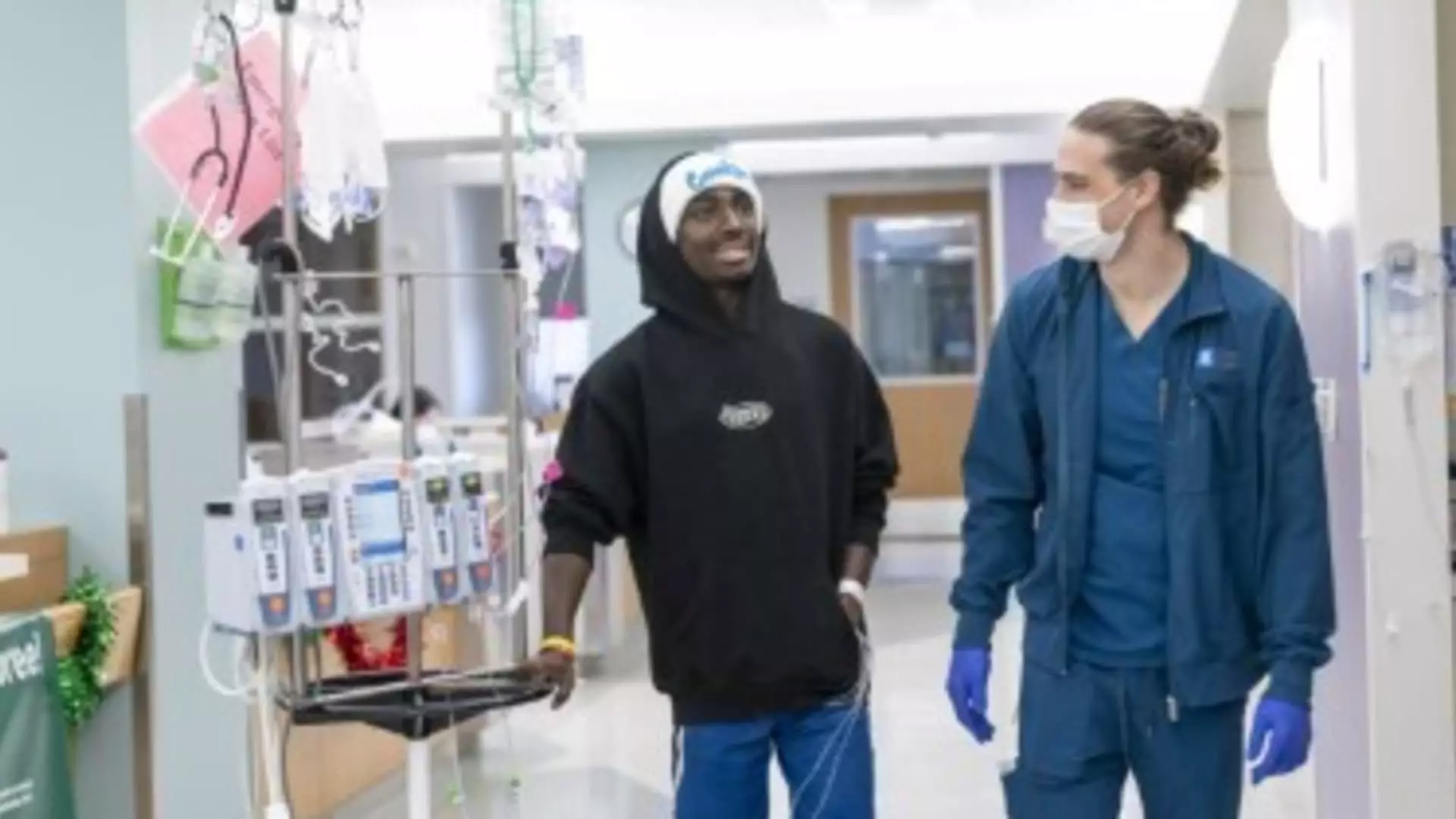Sickle cell disease (SCD) is a severe genetic blood disorder characterized by the production of abnormal hemoglobin, leading to distorted red blood cells that resemble crescent moons. This peculiar shape contributes to a host of complications, primarily severe pain crises, which often necessitate hospitalization. The condition predominantly affects individuals of African descent. Unfortunately, many patients, especially children, experience acute episodes that disrupt their daily lives, education, and overall well-being.
For young people diagnosed with sickle cell disease, the road ahead can often feel daunting. The constant battle against the disease can heighten feelings of helplessness. Nevertheless, recent medical advancements have paved a promising path forward.
In a groundbreaking development for patients like Deshawn “DJ” Chow, gene therapy has emerged as a potential powerhouse cure for sickle cell disease. The approval of new sickle cell gene therapies by the Food and Drug Administration (FDA) heralded a new era in treatment, offering hope where there was once despair. For DJ and his family, the journey began with extensive hospitalizations and “crippling pain,” punctuated by their frantic search for effective treatment options.
In pursuit of a breakthrough, the Chow family found solace at City of Hope Children’s Cancer Center in Los Angeles, which offered access to Casgevy, the pioneering sickle cell gene therapy developed by Vertex Pharmaceuticals. For families financially burdened by the costs of extensive medical treatment, employer-sponsored insurance has provided a critical lifeline, enabling patients to receive much-need care without insurmountable out-of-pocket expenses.
While the advancements in gene therapy represent a formidable stride in medicine, the financial implications are strikingly immense. With a price tag exceeding $2 million per patient, the financial landscape surrounding gene therapy poses significant challenges for families and healthcare systems alike. Such high costs can elicit concern about the sustainability of treatments, especially as demand begins to surge among the sizeable patient population in the U.S., which exceeds 100,000 individuals.
Additionally, the complexity of securing insurance coverage has proven to be another formidable hurdle. As healthcare institutions become acclimated to the ins and outs of billing for these therapies, many are beginning to navigate the intricate web of insurance requirements involving new treatments. Jennifer Cameron, a healthcare leader at Children’s National Hospital, noted that collaborations with payers are becoming increasingly commonplace as centers learn to traverse this complex billing landscape.
For individuals like DJ Chow, the benefits of these therapies can be life-changing. After finishing his treatment, DJ began dreaming of pursuits he had previously been forced to abandon due to his condition, such as snowboarding and surfing. The prospect of living a pain-free life seems within reach, and hope is finally blossoming where despair once reigned.
For those individuals whose organs have remained unharmed by SCD, gene therapy offers remarkable possibilities. The key to effective treatments lies in early intervention. Data shows that younger patients within this demographic are the most likely to experience profound benefits from these novel therapies.
Nonetheless, the current uptake of gene therapy is sluggish. As of a year post-approval, fewer than 100 patients had commenced treatment. The slow ramp-up in the patient treatment progress is concerning, particularly amid rising expectations for broader access to these new therapies.
As the healthcare landscape continually evolves, so too must the accompanying financial frameworks. Industry leaders like David Joyner, CEO of CVS Health, acknowledge the necessity for developing new payment models to accommodate the burgeoning demand for gene therapies. Emerging risk pools, whether at the state Medicaid level or through collaborative efforts among larger payers, must address the challenge of spreading financial responsibility to alleviate budgetary strains.
Similarly, state Medicaid programs are wrestling with the formidable task of managing the costs associated with these treatments. With a significant portion of the sickle cell population relying on federal funding, the landscape becomes even more complex. Budgeting for treatments priced at nearly $2 million could potentially provoke a fiscal crisis within already pressured systems.
The Biden administration’s initiatives, such as the Cell and Gene Therapy payment model, offer a glimmer of hope for states navigating these uncharted waters. While the promise of federal funding may assist in covering some costs, it is unlikely to completely fill the financial chasm.
The rapid advancements in gene therapy for sickle cell disease represent a remarkable evolution in treatment options. Families like the Chows can forge ahead with newfound hope for the future, as the potential of gene therapy opens doors previously locked by the devastating effects of SCD. However, as the system transitions, addressing the challenges of high costs and insurance coverage will be paramount. Ensuring equitable access to these transformative therapies will require innovative solutions from healthcare providers, policymakers, and stakeholders alike.
Navigating this intricate landscape is essential not just for those currently impacted by sickle cell disease but for the broader community that looks to these advances with optimism for a healthier, pain-free existence.

